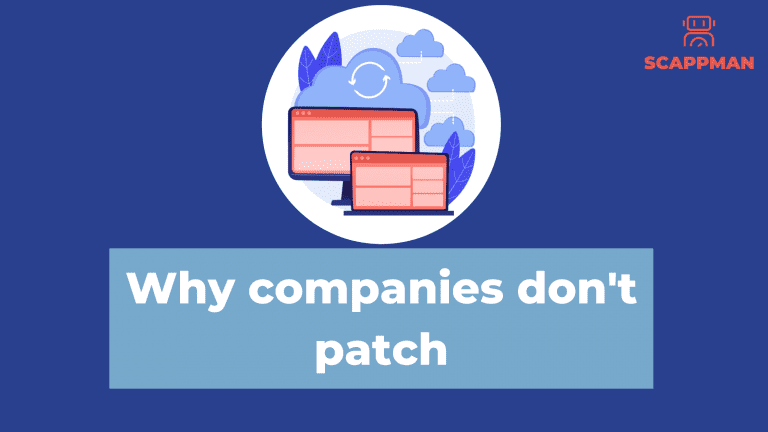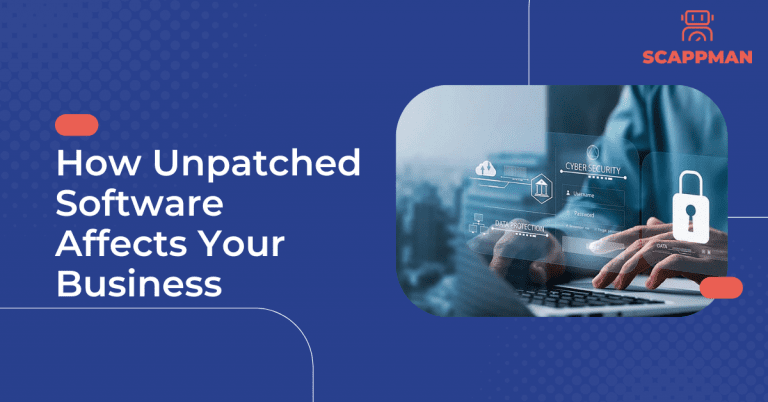It sounds so simple: always install the latest updates on all operating systems and third-party applications over the entire IT infrastructure. So why is keeping OSs& software up to date one of the most common weak points in companies?
Unfortunately, for many IT admins, manual patching has turned into an endless ever-growing task and missing one application update can create a large security hole that affects the entire organization. According to a recent study by the Ponemon Institute, nearly 60% of companies don’t patch their systems on a regular basis.
These security holes in your IT system can result in a loss of critical data, violate privacy policies, and eventually lead to security breaches. Just think of all the times when you or your employees postpone the update notifications on their devices. These notifications are important updates that keep your business’s information safe. Ignoring these updates leaves your business vulnerable to data breaches and other security breaches.
CVEs in OSs and third-party applications are always being discovered. For example, more than 50 CVEs a day were discovered in 2021. In response software vendors regularly issue patches to cover the security gaps. But patching matters not only for security reasons but also, to increase stability, add new features, change UI, and fix bugs.
To know more about patches read our blog “What is Patch Management: stages, best practices, challenges, automated patch management”
For all these reasons, patching remains the single most important thing you can do to secure technology in your organization and is why applying patches is often described as the basics. But still, implementation of proper patch management for most companies is easier said than done. We highlighted the top 5 reasons why companies do not patch.
Top 5 reasons why companies don’t patch their software
- Patching can break everything. The most common reason is that there’s a real fear that the solution could become the problem. In some cases, a patch can break something vital in an unpredicted manner. This can be explained by the big number of patches that you have to deploy.
- Patching takes time. Patching is repetitive, unrewarding task – IT professionals have to regularly check for updates and then install them, which can be a drain on resources. Ideally, they must test the patches before rolling them out fully – which can help uncover any problems they may cause, but which also takes more time and money. Furthermore, some patches can be more difficult to install than others. This can cause delays in getting the updates installed, which can impact business operations.
- You can only patch something if you know it exists. As it’s hard to maintain accurate, up-to-date asset inventories across big IT systems, many organizations don’t have a clear overview of applications installed, endpoints and other assets. Consequently, if you don’t know which applications you have installed on which devices, you don’t know what to patch.
- Too many patches to keep up with. Even if companies are able to manage OS updates, third-party application vulnerabilities are often overlooked, leaving endpoints at risk. To illustrate this challenge, we always use this example. Google Chrome releases a full OS update once a week. To package and test the update, an IT specialist spends 3-8 hours. Thus, only for patching Google Chrome, an IT specialist must spend an enormous amount of time, going through the patching cycle 3-4 times a month. An average company uses 110 applications, which means you have to monitor 110 applications for updates. It’s not hard to see how the number of outstanding patches can quickly overwhelm an already busy IT department.
- End user resistance. Who can relate: you have received an update notification and clicked the “remind me later”? Users just want to get their work done and rarely consider security during their day-to-day operations. The last thing they want is to spend time waiting for the update to be installed or be forced to reboot the laptop. What they do is:“I’ll do it later,” or “it’s probably not important” *click Postpone*. This seemingly innocent event can have serious consequences for the entire business.
None of the reasons above (the excuses, we would say) is the actual reasons, that allow you not to patch as much you can.
The only solution is automated patch management.
Experts say patch automation is critical for easing operational burdens on IT staff and minimizing errors. According to the Ponemon Institute survey (2019), only 44% of organizations used automated solutions for patch management.
Automated patch management solutions can help organizations keep track of all of the patches that need to be applied, and they can automate the process of deploying patches and updates.
That’s why Scappman should be implemented into patch management in your company.
Scappman is a 100%-cloud solution that automatically installs all the necessary updates for your applications. Scappman automates the whole process of uploading the application and updating it in the Microsoft Intune environment. There are more than 800 third-party applications in Scappman App Store, that are always up to date and secure to use. We’ll make sure that hackers can’t use vulnerabilities in outdated applications to steal or encrypt your data.
To know more about Scappman and automated third-party patch management book a demo with our team.




